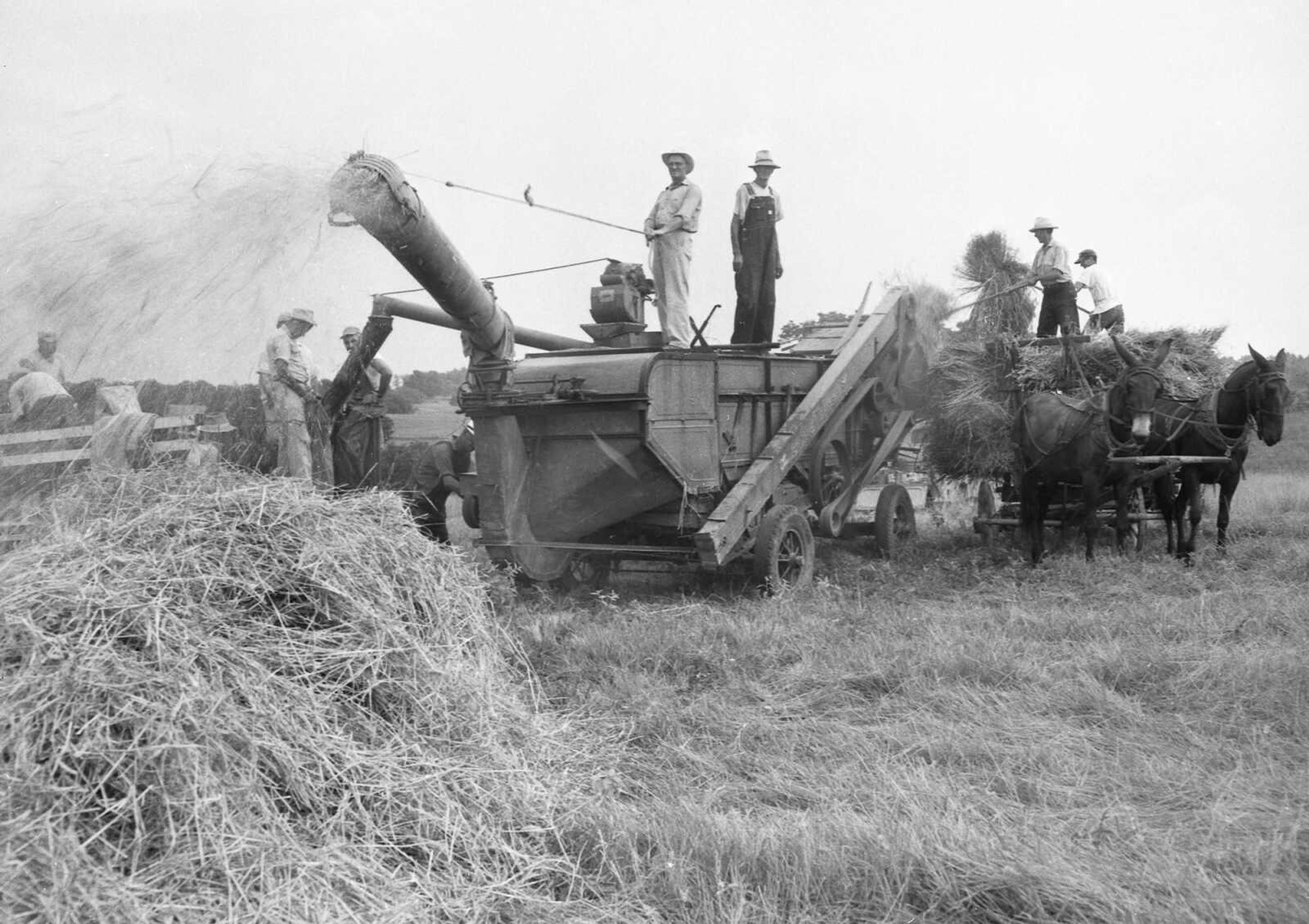Missouri bicentennial: Mules a good fit as state animal
Nearly 26 years ago, on May 31, 1995, after intense lobbying by the late retired Air Force Col. Charles Woodford of Cape Girardeau and others, then-Gov. Mel Carnahan signed a bill establishing the mule as Missouri's state animal. A mule is a hybrid animal, the offspring of a female horse (mare) and a male donkey (jack). ...
This is the sixth in a series of articles with Kellerman Foundation for Historic Preservation board chairman Frank Nickell, an emeritus faculty member of Southeast Missouri State University, commenting on Show Me State history on the 200th anniversary of Missouri being received as America's 24th state in 1821.
Nearly 26 years ago, on May 31, 1995, after intense lobbying by the late retired Air Force Col. Charles Woodford of Cape Girardeau and others, then-Gov. Mel Carnahan signed a bill establishing the mule as Missouri's state animal.
A mule is a hybrid animal, the offspring of a female horse (mare) and a male donkey (jack).
For decades in the 1800s, the Show Me State was America's premier mule producer.
Sedalia, Missouri became the state's mule capital and Sikeston became known for its popular mule auctions.
According to the University of Missouri-St. Louis (UMSL), as many as 45% of Missouri farmers were once involved in the use or breeding of mules.
Mule a 'fit' for Missouri
Missouri prides itself, UMSL reports, on its history as a large rural community and as the "gateway to the West," adding the state was frequently the location where immigrants bought and filled wagons often pulled by mules taking them westward.
"Hundreds of mules used to come from a spread near Oak Ridge, and today there is a big mule farm north of Benton," said Nickell, who explained he has made the following remark in many presentations about the animal over the years.
"I tell folks the mule is the only animal that can become extinct and be brought back. It can be recreated," said the venerable historian, who taught at Southeast for 43 years until his 2012 retirement.
Missouri, as a historically significant agricultural state, bred horses and donkeys because there weren't enough horses to do farm work, Nickell said.
Eventually, technology began to diminish the mule's importance.
By 1940, the tractor had largely replaced the animal on the family farm.
Coincided
with statehood
"The Santa Fe Trail, pioneered in 1821, the same year Missouri was admitted to the Union, created the Missouri mule," offered Nickell, noting the 900-mile pathway connecting Franklin, Missouri, with Santa Fe, New Mexico, was a huge physical challenge for travelers -- adding the trail's dangerous plains were often patrolled by armed bandits.
Additionally, the trail's hot deserts and steep and rocky mountains collectively made for an ideal environment for a tough pack animal such as the mule.
Wartime service
George Washington, Nickell said, was one of the first Americans to create and train mules -- hybrids the historian called bright and capable creatures.
Their usefulness, in their 19th century heyday, was also apparent.
"(Mules) drained our swamps, built our roads, were hard-working and were invaluable in war," Nickell said, noting the animal's historic importance in farming, logging and mining operations.
"Mules have been treated unmercifully throughout history," added the Illinois native, who said as many as 8 million may have been killed during World War I.
"(Mules) received horrible treatment and were often shot with their wounds going untreated," Nickell continued.
"England didn't have mules, so the United States sold them for $175 each. Before the widespread advent of the truck, they were used by Europeans to pull wagons, ambulances and ammunition trailers," said Nickell, who estimated the U.S. shipped hundreds of thousands of the hardy animal across the Atlantic to wartime partners.
A mule's character
"Mules are surefooted creatures, and if they trust you, you'll be safe," Nickell said, noting they continue to be used for drug trafficking and for tourism.
"It takes miles for a tourist to ride to the bottom of the Grand Canyon and for those journeys, the mule is the ticket," he added.
A mule's nature
"Training a mule is not a pleasant discipline," Nickell said, in full agreement with the animal's legendary "stubborn" stereotype.
"You have to break a mule, (but) it's worth the effort because it becomes loyal and close to its owner," he added.
Contemporary value
"Mules are more popular now than at any time since the 19th century," said Nickell, who noted a mule can command high prices today in states such as Arizona and New Mexico, with going rates from as high as $10,000 to $40,000.
"They are smart, hearty and strong and good on trails," said Nickell, adding bigger mules are typically found in Amish communities while more compact versions are common in Colombia, Venezuela and in Europe.
"The smaller ones can be used in narrow passages going through mountains," he noted.
World's Fair
The State Historical Society of Missouri, on its website, www.missouri2021.org, reported the term "Missouri mule" was coined at the 1904 World's Fair in St. Louis, in which a six-mule hitch, belonging to a Platte County farmer, swept the competition.
Judges chose W.A. Eglin's animals over an estimated 1,000 mules exhibited from several states.
UMSL historians say a typical Show Me State mule is a cross between a mare of a draft breed and a mammoth jack, producing a stout, strong animal easier to manage and more agile than a draft horse.
UMSL offered words of conclusion about the state animal: "Associated with strength, endurance and honesty, the Missouri mule is a symbol of the rich agricultural beginnings of the Show Me State. Today, (mules) are primarily used for recreation, although some are still used to work farms and forests."
Connect with the Southeast Missourian Newsroom:
For corrections to this story or other insights for the editor, click here. To submit a letter to the editor, click here. To learn about the Southeast Missourian’s AI Policy, click here.










